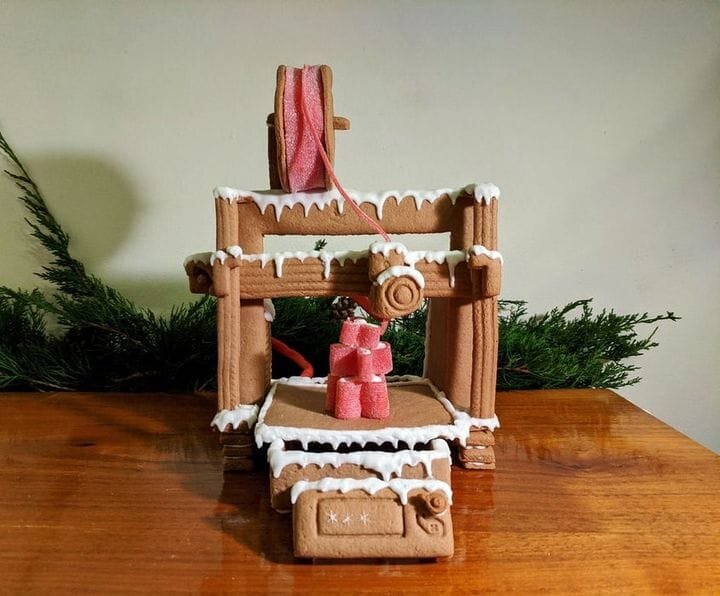![A gingerbread 3D printer, made using 3D printing [Source: Instructables]](https://fabbaloo.com/wp-content/uploads/2020/05/image-asset_img_5eb08c597c4cb.jpg)
This week’s selection is the Gingerbread 3D Printer by Instructables contributor 3Demon-3Dprint.
This project is a bit unusual for a Design of the Week as it is not a directly 3D printable item. However, 3D printing is involved in the project and it is in fact a 3D printer. Or a theoretically edible one, anyway.
It’s inspired by the curious habit of individuals at this time of year who for unexplainable reasons spend considerable time building faux buildings out of gingerbread boards. Personally, I’ve found this activity frustrating and often messy.
In general, the same construction techniques are employed here, except that instead of a faux building being made, you’re making a faux 3D printer. It seems to be a Prusa-like i3-style device, although actual 3D printing operations are likely not possible.
The instructions provided are extremely detailed and even the most kitchen-fearing 3D printer operator should be able to attempt this project.
How is 3D printing involved? It turns out that such construction projects are best done with pre-made parts. In the normal faux building projects, these parts are supplied in the kit. But in this project you will manufacture the building components yourself using 3D printed cutters.
The idea is to prepare the gingerbread dough in the usual manner (if indeed there is a usual way to do so), and then cut it into the required shapes using 3D printed cookie cutters.
Now before you interrupt me to suggest that the use of 3D printed parts is not food safe, I should point out here that we are not EATING the gingerbread 3D printer; we are only going to LOOK at it, and be amazed.
Like the faux buildings, the faux 3D printer parts are affixed to each other using “icing”, a rather poor building material, but for this purpose it seems to work, and can be licked off your fingers if absolutely necessary. I told you it can be messy.
Once finished, you’ll have a reasonable representation of a 3D printer, although the bed is probably warped unless you let that part dry out thoroughly before assembly.
Just don’t expect the prints from it to be any good.
Via Instructables

